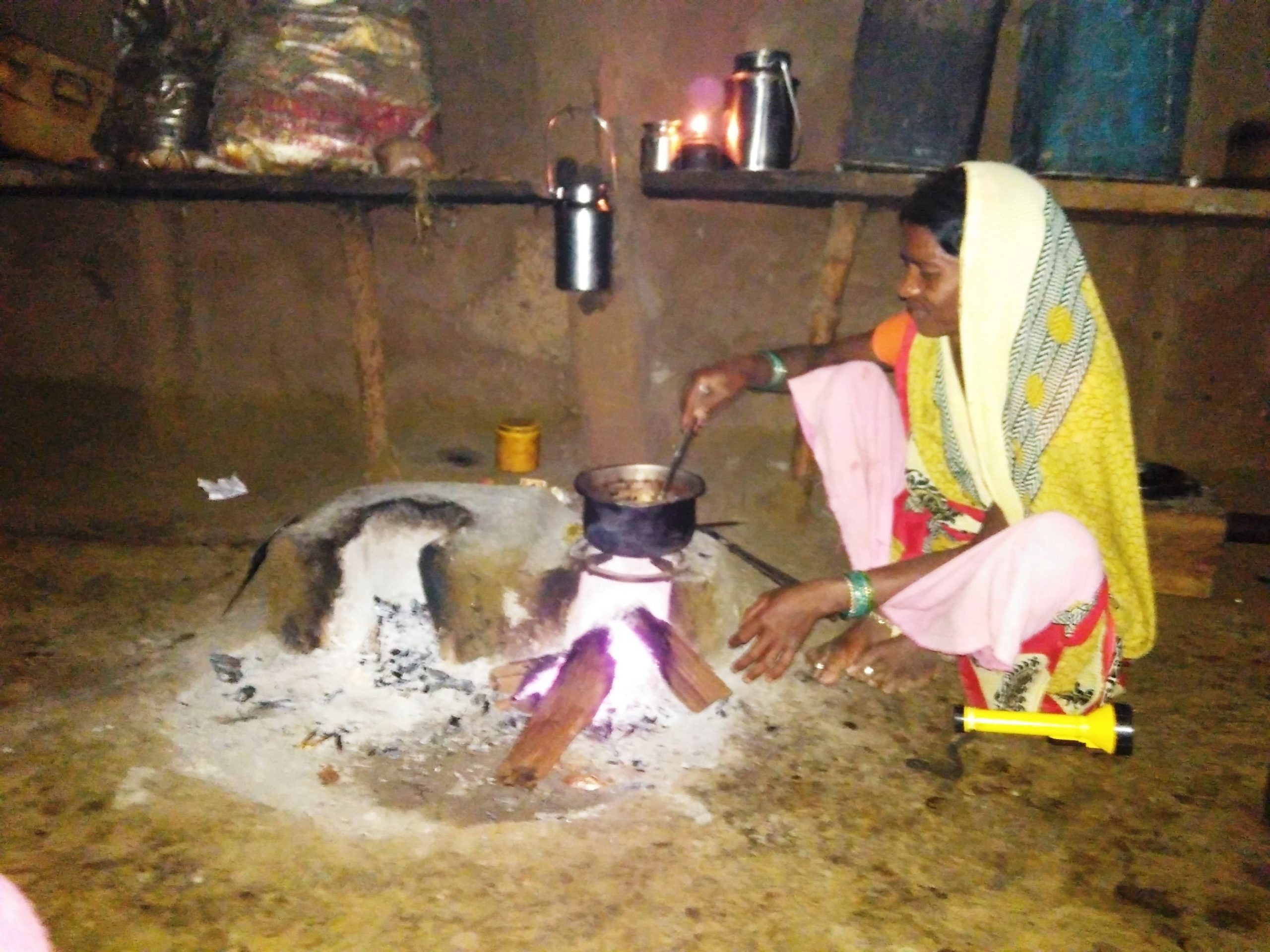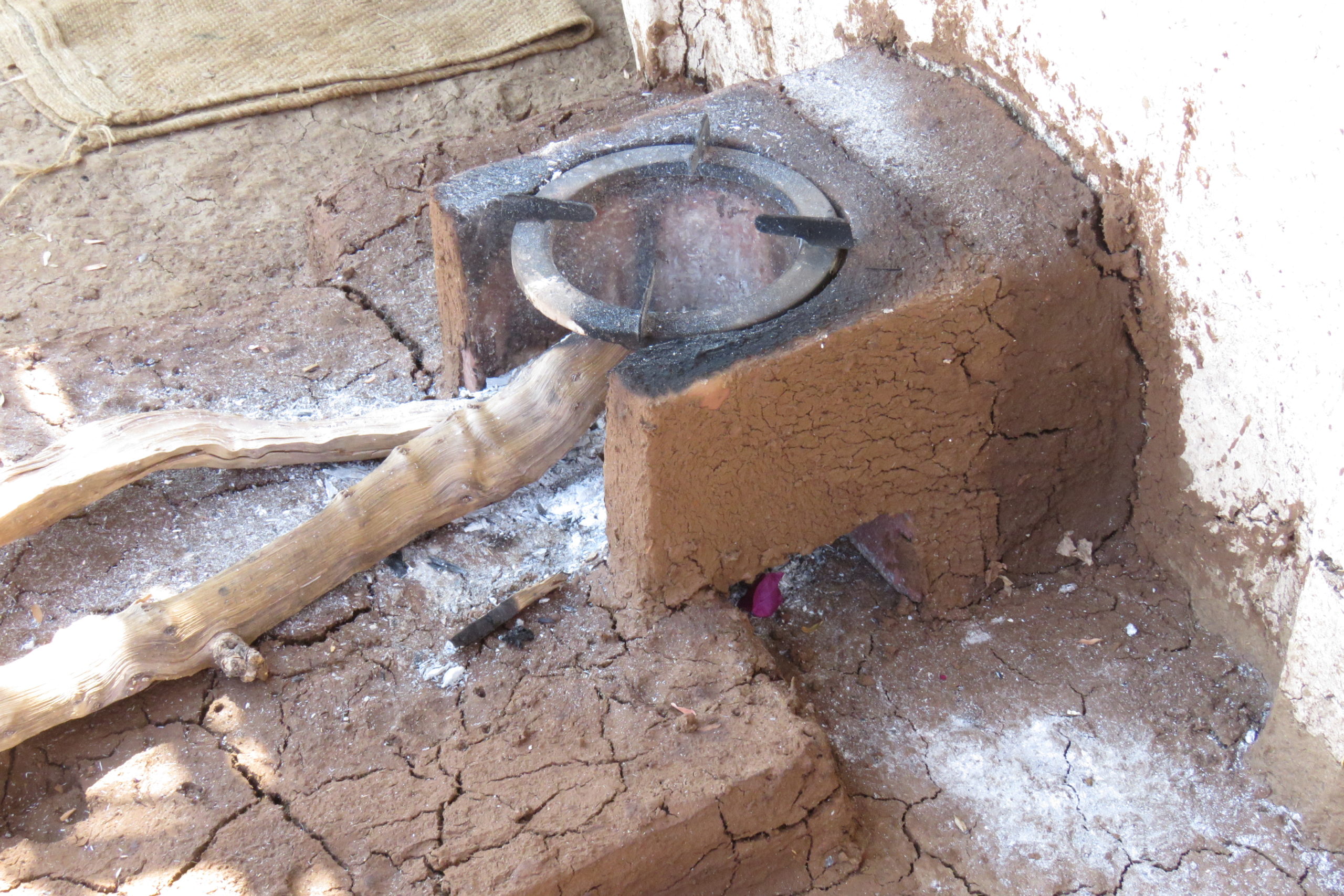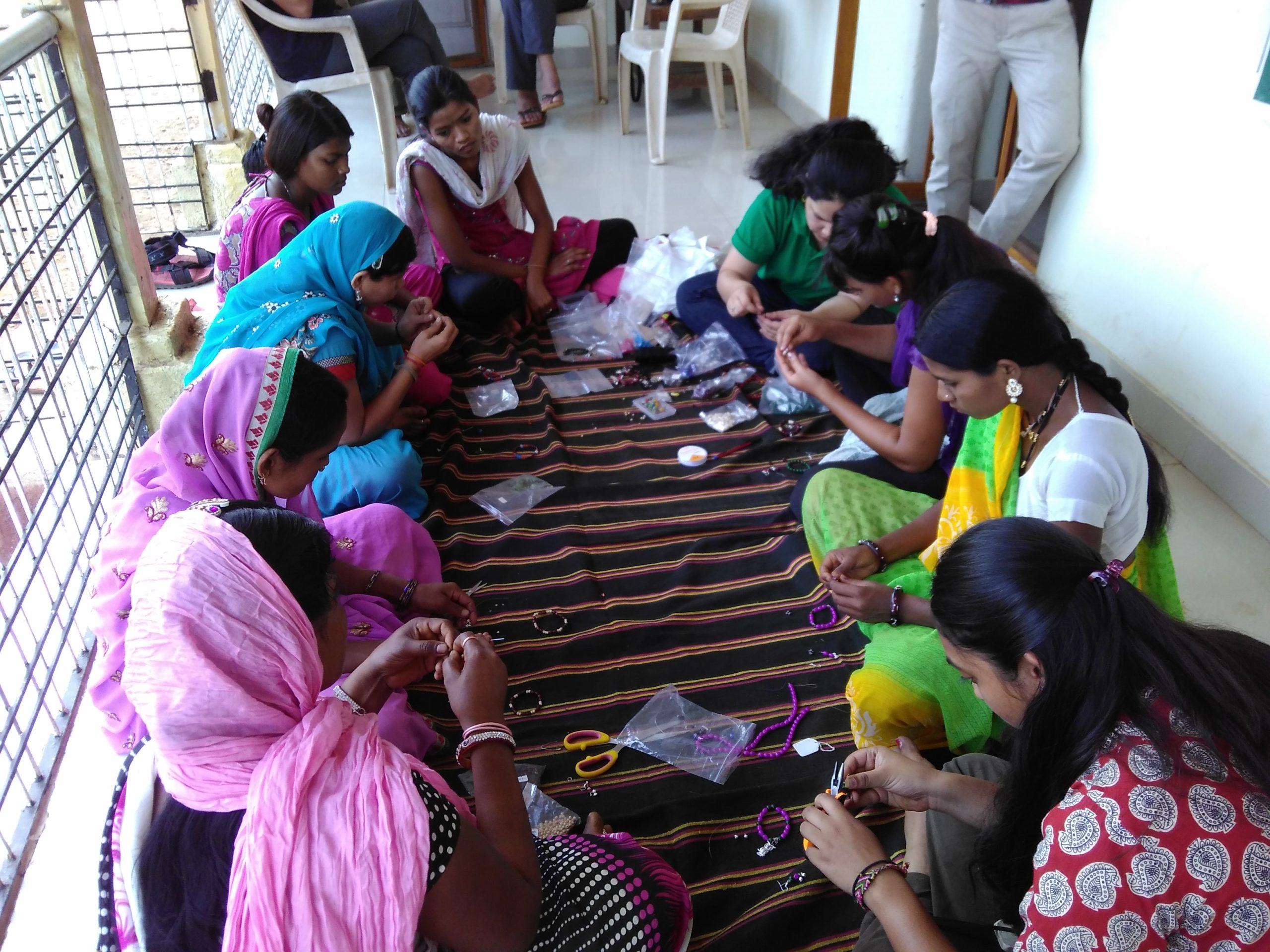Tigers and a Tale: How smokeless chulhas and saris-turned-mahua-nets are helping reduce human-tiger conflict in Melghat Tiger Reserve, Maharashtra
Smokeless chulhas, handicraft-making and innovations in collecting mahua flowers have ensured villagers around the Melghat Tiger Reserve in Maharashtra don’t spend too much time deep inside the forest. But their rehabilitation process has come under some fire.


Wildlife Research and Conservation Society has distributed smokeless chulhas at a subsidised rate to the local tribal families in Maharashtra. Photo: WRCS
Thirty-year-old Shankar Sanu Sakhum is from Chaurakund village. Till recently, like most of the 2,628 residents of the village near Melghat Tiger Reserve in Maharashtra’s Amravati district, he used to venture deep inside the buffer area of the tiger reserve to collect firewood. However, these days, Sakhum spends less time in the forest, thanks to an efficient portable cement smokeless chulha or stove that he and the other tribal residents have started to use.
“The smokeless chulha I received in 2019 requires less firewood compared to my older one. This means spending less time in the forest and less danger of encountering a tiger,” he told Gaon Connection.
Smokeless chulhas in the villages of Melghat have another positive fallout — reduced human-wildlife encounters in the region. And this is one of the impacts Pune-based non-profit Wildlife Research and Conservation Society, which is carrying out a tiger conservation project in Melghat since 2015, wanted to make.
This initiative of the non-profit aims to reduce pressure on Melghat, a critical tiger habitat in Maharashtra, by working with the local Korku tribal community and supporting its income generation activities, and reducing its dependence on the forests.
Melghat Tiger Reserve is nestled in the Satpura range. It has 50 tigers, according to a 2018 report by the National Tiger Conservation Authority. There are villages in its buffer zone and a large number of tribal families are dependent on the forests for their livelihood and sustenance.
Apart from distributing smokeless chulhas at a subsidised rate to the local tribal families, Wildlife Research and Conservation Society has worked with the villagers to improvise and convert discarded saris into mahua-flower-collection-nets.
Like the smokeless chulhas, these mahua nets have reduced the time villagers spend in the forest collecting mahua flowers. Reduced time spent in the forests means less encounters with the wildlife in the Melghat Tiger Reserve and less conflict.

Smokeless chulhas
Since 2017, the Wildlife Research and Conservation Society has distributed 1,300 improved cook stoves, also known as smokeless chulhas to as many tribal families in Melghat. As against the cost of Rs 400, these chulhas were offered at a subsidised rate of Rs 50 in 16 of the 74 buffer area villages to help reduce firewood usage by the local villagers.
Chaurakund is one such village. Bhorelal Mucha Dhikar, its resident said the new stove gives off less smoke and is, therefore, less polluting. Dhikar owns 0.80 hectares of land where he cultivates paddy, jowar and Bengal gram. Earlier, his family of six used 10 to 12 kilogrammes of firewood each day to boil water and cook food, but they now need only five to six kg — a nearly-50 per cent reduction in firewood consumption.

“The cook stove initiative has reduced the quantity of firewood consumed by communities. An average reduction of twenty to thirty per cent has been noted,” Jayant Kulkarni, executive director of Wildlife Research and Conservation Society, told Gaon Connection.
Meanwhile, the smokeless chulha has also reduced cooking time, said Birbal Kasbekar, who used to daily walk two kilometres to collect firewood. “Earlier, it used to take up to two hours to cook a meal, now it takes not more than forty-five minutes,” he said.
According to Kulkarni, his non-profit plans a third round of distribution soon to replace damaged stoves and provide households additional stoves funding for which was received as part of an International Union for Conservation Of Nature project for the chulhas. The project was coordinated by the Maharashtra forest department. Many not-profits were involved, and Kulkarni’s organisation was the partner for Melghat, which received a fund of Rs 50 lakh, including for education.

Mahua nets for collection
In order to reduce the human-tiger conflict while supporting the livelihood of the local tribal population, Wildlife Research and Conservation Society has also introduced mahua-nets made out of discarded saris to the local villagers. The funding for the project was from the state forest department.
Traditionally, in order to collect the much-prized mahua flowers (used to make a flavourful local drink, mahua laddoos and also used by a Bastar self-help group to bake cookies) more easily and quickly, tribal inhabitants usually burn the undergrowth, a dangerous thing that could trigger forest fires.
Now, mahua nets/sheets made of discarded saris are either spread under the trees or tied to branches. “It helps reduce the time needed for collection from six hours to just two hours. The flowers on the sheets are collected in a basket,” explained Kulkarni.
“We need forty to forty five saris, preferably cotton ones, for making one net of about twenty metres. Each net costs about one thousand five hundred rupees,” Ashok Prabhudas Bethekar, a member of the non-profit, told Gaon Connection. “Old saris bought from the second-hand market are given to tailors for making these nets. We have made fourteen nets so far and distributed them free of cost,” he added.
These nets have been distributed free of cost to 10 families in Chaurakund and four in Tangda village, about five kilometres away. And there are plans to distribute more nets.
With the help of these nets, each family is able to collect about 250 kg of mahua in the March to April season easily. The sale price of the flowers stands at about Rs 20 a kg.
Sakhum of Chaurakund village received the mahua net in April last year. “Earlier, I had to clear a lot of vegetation and undergrowth. Now, my labour has considerably reduced,” he told Gaon Connection. Besides cultivating Bengal gram or chana dal, soybean and paddy on 1.21 hectares, Sakhum also collects four to five quintals (400-500 kg) of mahua during the season between March and May. Last year he earned about Rs 10,000 in profit from mahua flowers sale. Besides what they sell, the villagers stock some dried flowers at home for making a native toddy.
Like Sakhum, Sudhakar Karma Darchinde of Chaurakund is also happy with the mahua nets. “Setting fire to the undergrowth for mahua collection affected flower quality as well,” he said.
This innovation has also helped tribal children stay in school — earlier, they missed classes to help their parents collect the flowers. “We experimented with this method in 2020, and people are now asking us for more sheets. We are hoping to take this to more people,” Kulkarni added.

Bamboo handicrafts
Melghat is part of Project Tiger and a critical wildlife habitat. While human-wildlife encounters are not common, crop raids are frequent. The number of tigers in the buffer area stood at nine in 2014 and 2015, increasing to 14 in 2016 and 17 in 2018, according to the Wildlife Research and Conservation Society’s technical report submitted to the chief conservator of forests, Amravati.
“To help them with an alternative livelihood, the villagers have been trained to make handicrafts of bamboo. The objective is to provide incentives to the community so that they become conservation partners,” said Kulkarni.
Intensive month-long training capsules were conducted in 2017 and 2018 for bamboo craft. Several training workshops were held in Chaurakund and Khamda villages — so far, 50 women have been trained. The products they create are sent to Pune every month, sold online, through local contacts and in exhibitions. The sale of handicrafts generated an income of Rs 1.5 lakh in the community in the span of a year. The artisans make colourful coasters, T-shirts, wall hangings and key chains.
Apart from this, the Dr Shyamaprasad Mukherjee Jan-Van Yojana, a state government initiative, also offers benefits to local communities. It facilitates setting up of solar lights, distribution of torches, construction of water tanks and laying of pipelines.

Relocation and rehabilitation woes
While the income generation initiative is bearing fruits, the relocation and rehabilitation of tribal families from Melghat Tiger Reserve remains contentious. The core area (1,500 sq km) of the tiger reserve has 10 villages and the 1,268 sq km buffer zone has 74 villages. While a group of families is open to relocating outside of the tiger reserve, there are many adamant to get land-for-land.
To encourage the villagers in relocation and rehabilitation, the state government has made the package lucrative, Chaurakund’s former forest range officer Nirmal Kumar, told Gaon Connection.
Currently, a couple gets Rs 10 lakh for rehabilitation. An adult child gets another Rs 10 lakh. According to Kishor Rithe, founder of the non-profit Satpuda Foundation, the villagers “have been petitioning for rehabilitation since the past three decades, but the government has been slow in responding due to funds crunch”. Speaking to Gaon Connection, he said the tribal people in interior forest villages “voluntarily want to shift because they are cut off during the monsoon season”.
However, Purnima Upadhyay of KHOJ, a not-profit based in Melghat, said the tribal people must get land for land when they are shifted to a new place. “The problem with the ten lakh rupee package is that it is dividing people in the village,” she told Gaon Connection. “Those who own land do not want to move out or want the same land that they have, as tribal people are innately connected to the land and forest. However, landless people want the money and are ready to move,” she added.
“Some people in Pastalai village are refusing to move until their rights under the FRA [Forest Rights Act, 2006] are settled. But they are being harassed and their cattle seized,” she alleged.
Omkar Bhayalal Kasbekar, who lives in Malur in the core area, wants to be resettled only in Melghat, preferably in the buffer area. Like most Malur residents, he also farms on about 3.2 hectares of land. “I will move only after I get cultivable land, but they tell us to buy land from the ten lakh rupees they will give us. Land is very costly. One acre of land [0.4 hectares] costs nine lakh to ten lakh rupees, and even goes up to fifteen lakh rupees. How can we afford that?” he asked.

